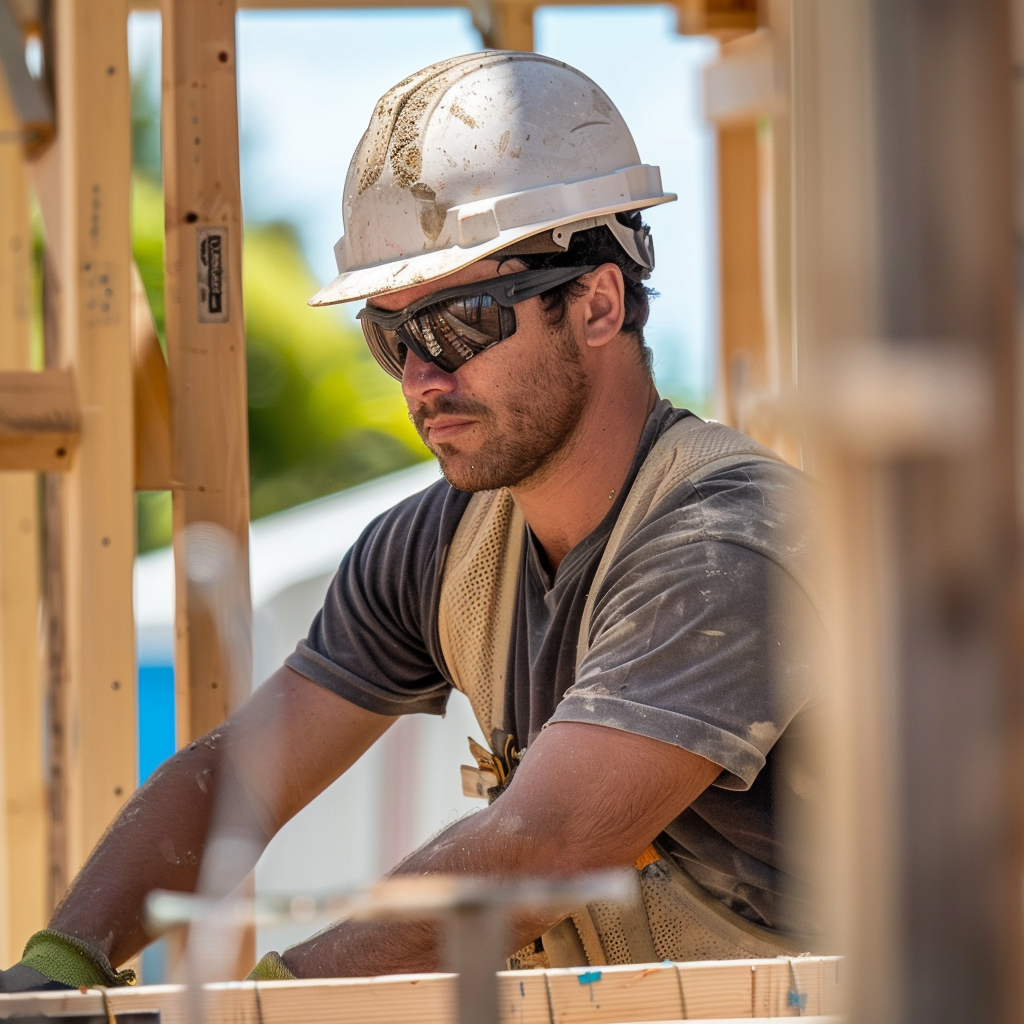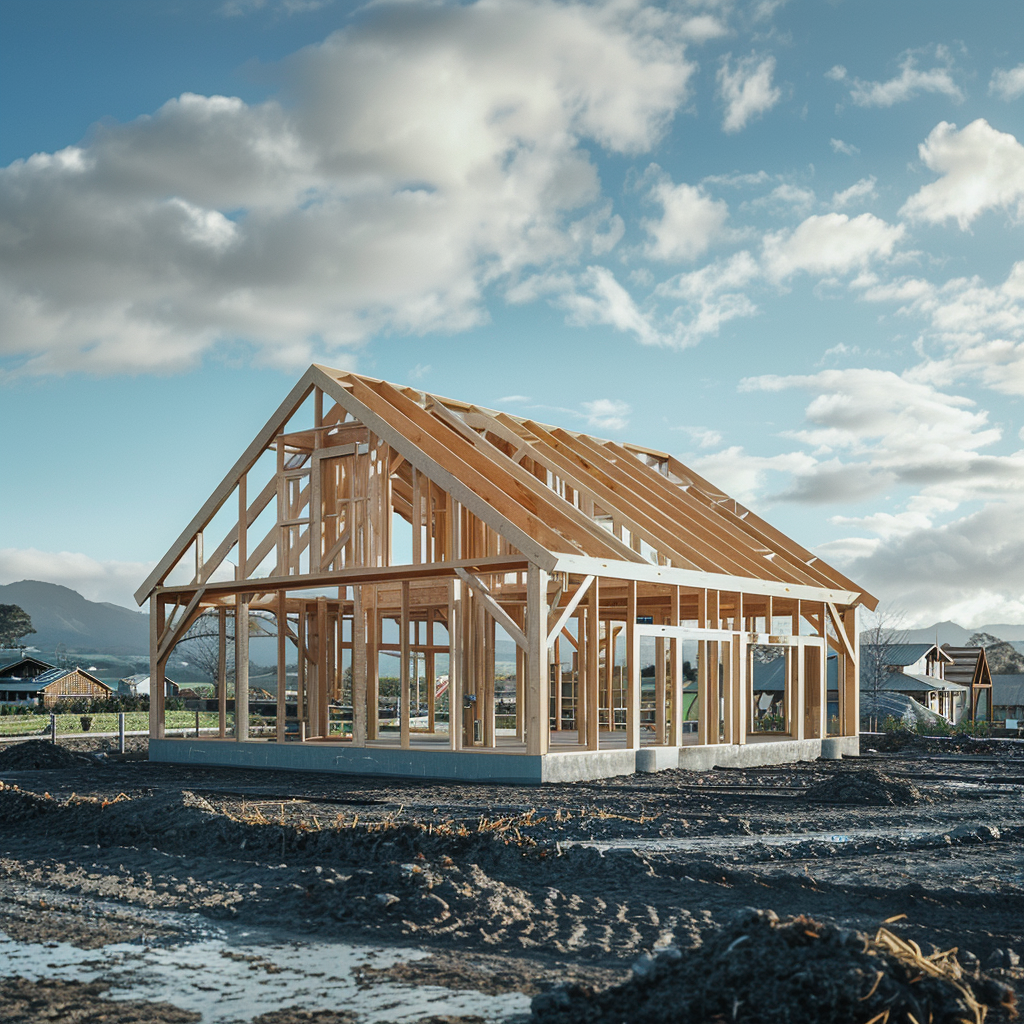Waste management on construction sites is a critical aspect of the building process, affecting both the environment and the bottom line. As construction activities escalate, so does the generation of waste materials, ranging from packaging and scrap materials to debris and hazardous substances. You must recognise the gravity of managing this waste not just to comply with regulations but also to shoulder environmental responsibility.
In this article, we will discuss techniques for effective waste management that are crucial for construction projects. These methods aim to reduce the impact on the environment and promote sustainability. Managing construction waste carefully is extremely important in today's world, where climate change is a major concern.
Here are some key benefits of implementing proper waste management practices in construction:
- Economic Benefits: By adopting smart waste management strategies, construction companies can save on disposal costs, recover value from recycled materials, and optimise resource usage.
- Environmental Advantages: Proper waste handling reduces landfill use, decreases pollution, conserves natural resources, and mitigates greenhouse gas emissions.
Join us as we explore comprehensive approaches that ensure your next project is not only efficient but environmentally sound.
1. Waste Management Plan
Creating a Waste Management Plan is essential for any construction site committed to reducing waste and streamlining disposal procedures. A comprehensive plan serves as a roadmap outlining how a project will handle waste from start to finish, with the dual benefits of protecting the environment and potentially reducing costs.
Key Components of a Waste Management Plan
A robust Waste Management Plan should address the following components:
- Waste Identification: Classify waste types generated on-site, such as concrete, wood, metal, or hazardous substances.
- Segregation Strategies: Determine methods for separating materials to facilitate recycling and minimise contamination.
- Storage Solutions: Designate areas for different types of waste, ensuring that they are accessible yet do not interfere with construction activities.
- Disposal Methods: Identify appropriate disposal techniques for each type of waste, including recycling options and landfill use.
Step-by-Step Guidelines for Creating an Effective Plan
To develop an effective Waste Management Plan, follow these guidelines:
- Set Clear Goals:
- Define specific objectives for waste reduction and management.
- Align goals with sustainability targets and regulatory requirements.
- Assign Responsibilities:
- Appoint a waste management coordinator to oversee plan implementation.
- Ensure team members understand their role in managing waste on site.
- Conduct Site Analysis:
- Assess the potential sources of waste during different phases of the construction process.
- Estimate the quantities of waste to be generated.
- Develop Segregation and Storage Protocols:
- Create a system that allows workers to easily separate recyclable materials from non-recyclable ones.
- Ensure storage locations are clearly marked and accessible without being obtrusive.
- Choose Disposal Partners:
- Partner with reliable vendors who practice sustainable disposal methods.
- Document all waste that leaves the site for accountability.
- Implement Monitoring Mechanisms:
- Regularly track and report on waste generation and management outcomes.
- Adjust the plan based on performance data to improve efficiency.
By adhering to these steps, you can formulate a Waste Management Plan that not only complies with regulations but also showcases your commitment to environmental stewardship. Remember, proactive planning enables more efficient resource use and contributes to the overall success of your construction project.
2. Needs Assessment and Vendor Research
Conducting a needs assessment is a crucial first step in understanding the specific waste management needs of your construction site. This assessment is essential for creating an effective strategy that addresses the unique challenges and opportunities of your project. You should evaluate the types, amounts, and sources of waste that will be generated on your site. This detailed analysis will help you identify the most suitable waste management practices and choose external solutions that align with your project's goals.
When conducting vendor research, you explore the market to find reliable waste management vendors or service providers. There are several important factors to consider during this process:
- Experience: How long has the vendor been working in the construction industry?
- Compliance: Does the vendor follow all relevant regulations and standards?
- Capacity: Can they handle the volume and types of waste generated on your site?
- Flexibility: Are they willing to customise their services to meet your project's specific requirements?
- Cost: Is their pricing competitive while still ensuring high-quality services?
Choosing a vendor who shares your commitment to sustainability is vital. To thoroughly evaluate potential waste management vendors, ask them these key questions:
- What are your sustainability policies, and how do you enforce them?
- Can you provide examples of successful waste management programs you've implemented on similar construction sites?
- How do you track and report on waste diversion and recycling rates?
- What innovations or technologies do you use to improve waste management processes?
- Are there any other environmental initiatives that you support or participate in?
By carefully considering these factors, you can be confident that the vendor you choose will not only handle waste effectively but also have a positive impact on your project's environmental performance. Remember, selecting a vendor through an informed process is crucial for establishing a successful partnership that supports your construction site's waste management goals.
3. Recycling Bins Placement
Effective waste management on construction sites is significantly enhanced by the strategic placement of recycling bins. This approach not only promotes proper waste sorting but also maximises the rate of recycling, contributing to a more sustainable project. When recycling bins are easily accessible and clearly marked, workers are more likely to segregate waste correctly, reducing contamination and ensuring valuable materials can be recovered.
Guidelines for Recycling Bins Placement:
- Visibility: Place recycling bins in high-traffic areas where they are easily seen and reached by all personnel on site.
- Proximity: Situate bins near the source of the recyclable waste—next to the areas where wood is cut, metal is fabricated, or concrete is mixed—to ensure immediate disposal in the correct container.
- Labeling: Clearly label each bin with the type of material it is for—wood recycling, metal recycling, or concrete recycling—to prevent cross-contamination.
- Volume and Size: Use large, industrial-sized bins for vast amounts of waste like wood and metal scraps, and smaller containers for less bulky materials such as packaging from construction materials.
- Accessibility: Ensure that every bin is easily accessible for both dumping waste and collection by removal services without obstructing work processes or site logistics.
By following these guidelines, you can achieve a more Organised construction site that prioritises environmental responsibility. The correct placement of bins facilitates the following:
- Wood Recycling: Wood waste can be processed into chipboard or used as biomass fuel. By segregating timber into a designated bin, you assist in repurposing a valuable resource.
- Metal Recycling: Metal scraps are highly recyclable. Positioning metal-only bins prevents contamination with other materials and ensures metals can be efficiently sent to smelters for reuse.
- Concrete Recycling: Concrete debris can be crushed and reused as aggregate for new building projects. Properly discarded concrete reduces landfill use and supports the circular economy within the industry.
With these measures in place, construction sites become exemplars of efficiency and sustainability. The next step involves taking proactive actions to further minimise waste through innovative approaches to packaging and material reuse.
4. Packaging and Material Reuse
Reducing waste on construction sites starts with a proactive approach to the materials used and their packaging. Recyclable packaging not only helps in minimizing the impact on landfills but also supports a circular economy where materials are kept in use for as long as possible.
Opt for Recyclable or Reusable Packaging
When selecting construction materials, prioritise those that come with recyclable or reusable packaging. This action reduces the volume of non-recyclable waste generated and ensures that materials can be repurposed effectively. By choosing suppliers who are committed to sustainable packaging solutions, you contribute to a market demand for eco-friendly practices.
Designate Areas for Material Reuse
- Create a Storage Zone for Salvaged Items: Allocate a specific area on your construction site for storing materials that can be reused. This practice not only prevents usable items from ending up in landfills but also saves costs by reducing the need to purchase new materials.
- Incorporate Reclaimed Materials into New Projects: Use salvaged items such as bricks, beams, and tiles in new construction projects. Not only does this reduce waste, but it also adds character and history to new builds.
Maintain an Organised Site for Efficient Waste Management
An Organised construction site is key to effective waste segregation. Establish clear signage and distinct areas for different types of waste, including zones for recyclable materials. Proper organisation ensures that workers can easily sort waste into appropriate categories, leading to higher recycling rates and less contamination.
Embrace Sustainable Materials Management Strategies
- Source Reduction Techniques: Reduce the amount of waste created by planning projects meticulously to avoid excess purchasing and by using precise measurements to minimise offcuts.
- Salvage Reusable Resources: Before demolition or remodeling, identify components that can be reused or donated. This strategy not only conserves resources but also offers tax benefits in certain jurisdictions.
Implementing these practices on construction sites not only leads to significant economic savings through reduced material costs and potential revenue from selling salvaged items but also promotes environmental conservation by diverting waste from landfills. By integrating material reuse principles into your project's ethos, you affirm your commitment to sustainability in the built environment.
5. Regular Site Inspections
Regular site inspections are essential for proactive construction waste management. By actively monitoring the construction site, you can make sure that waste management measures are not only in place but also being carried out effectively. These inspections act as a way to continuously improve, allowing teams to adjust processes and practices to minimise waste and promote sustainability.
Key Benefits of Regular Site Inspections:
- Verification of Practices: Confirm that the segregation and recycling strategies outlined in the Waste Management Plan are being followed diligently.
- Identifying Non-compliance: Detect any deviations from established waste management protocols, enabling timely corrective action.
- Continuous Improvement: Gather insights on the practical aspects of waste handling on-site, which can lead to improvements in procedures and training.
- Accountability: Reinforce the responsibility among workers and subcontractors to adhere to waste management guidelines through consistent oversight.
During these inspections, assess the condition and placement of recycling bins, investigate the use of designated areas for different types of waste, and evaluate the effectiveness of material reuse initiatives. You should document findings meticulously, noting both commendable practices and areas where intervention is necessary.
By prioritising regular site inspections, you show your dedication to construction waste management measures. This approach not only ensures compliance with environmental regulations but also fosters a sense of responsibility towards resource conservation within your team.
Effective waste management techniques are not just beneficial; they are imperative for the future of sustainable construction. By adopting the strategies discussed, you play an active role in minimizing the environmental impact of construction sites. These practices lead to:
- Sustainable Construction: The cornerstone of responsible building, ensuring that projects do not deplete resources or harm ecological systems.
- Cost Reduction: Efficient material use and waste reduction can translate to significant financial savings.
- Environmental Conservation: Less waste means a lower carbon footprint and a healthier planet for future generations.
As you plan your next construction project, remember that each effort towards better waste management is a step towards a more sustainable built environment. The adoption of these techniques is not just a professional responsibility; it's a collective duty to the world we inhabit. Engage with these strategies and set an example in the industry while fostering a legacy of sustainability and innovation on construction sites.
Keywords for Internal Search:
construction waste management, sustainable construction practices, recycling on construction sites, waste management plan, environmental sustainability construction, construction site waste reduction, construction recycling bins, waste segregation strategies, construction material reuse, sustainable waste disposal, eco-friendly construction practices, construction waste reduction techniques, construction project sustainability, green building waste management, construction waste planning, efficient waste handling construction, construction waste compliance, waste management construction industry, eco-conscious construction methods, reducing landfill use construction, construction site inspections, waste management benefits, sustainable building techniques, recycling bins placement construction, construction waste monitoring






